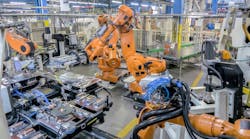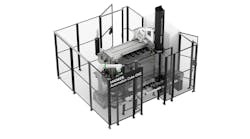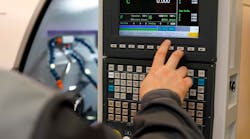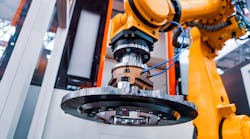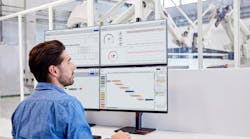A new CNC program has earned a U.S. patent for FANUC Factory Automation America and one of its engineers, Jerry Scherer. They were awarded U.S. patent No. 8,135,491 B2 for their development of the CNC Adaptive Control system for on-demand integrated adaptive control of machining operations.
FANUC develops and manufactures factory automation and robotics, and its subsidiary FANUC FA America supplies CNC systems in North and South America, including control systems, drives and motors, and CO2 laser solutions.
The automation developer explained that the CNC Adaptive Control system is a way to increase machine tool productivity with FANUC FA America's iAdapt S adaptive control solution. It said CNC Adaptive Control measures the present value of a spindle load and then compares this value to a present value of a target spindle load. The adaptive controller is configured to control the feed-rate of a machine tool relative to a workpiece, to maintain the present value of the spindle load approximately equal to the present value of the target spindle load using one or more calculations of the first feed rate value, the first feed rate dither adjustment value, and the second feed rate dither adjustment value.
This patented system is the base technology in FANUC FA America's iAdapt S solution that improves material removal and minimizes cycle time by automatically optimizing the cutting feed-rate based on the actual spindle load.
Also, the developer said integration of the iAdapt S software solution within the CNC eliminates the need for mounting hardware, simplifying installation while improving the capabilities of the original iAdapt product. The original iAdapt product introduced CNC users to the concept of roughing cycle productivity, FANUC FA America said, and the "On Demand" control feature simplified the use of the adaptive control by making it easy to setup and operate. iAdapt S extends tool life by keeping roughing tools fully loaded, putting the heat into the chips rather than the part. As a result, there are fewer minor stoppages, and that increases productivity and reduces labor costs.

